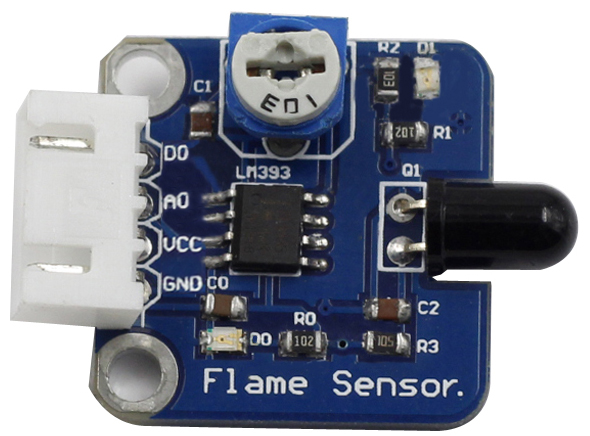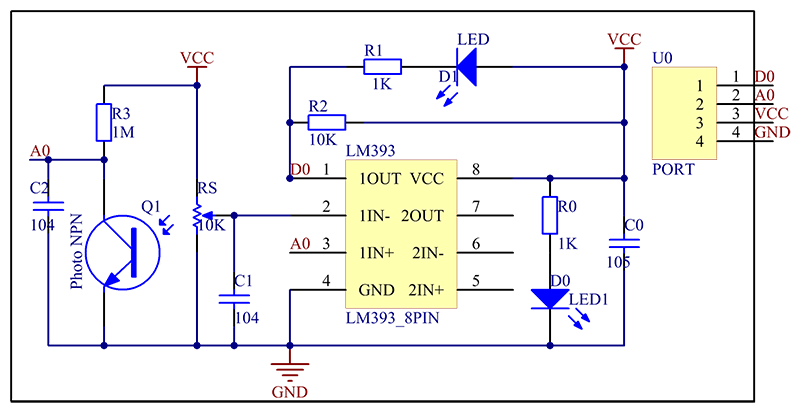Flame sensor Module
Contents
Introduction
A flame sensor module that consists of a flame sensor, resistor, capacitor, potentiometer, and comparator LM393 in an integrated circuit. It can detect infrared light with a wavelength ranging from 700nm to 1000nm.The far-infrared flame probe converts the strength changes of the external infrared light into current changes.

The schematic diagram of the module is as follows:

Features
1) Equipped with power light and a signal output indicator
2) Support a detection angle of appr. 60 degrees; particularly sensitive to flame spectrum.
3) Contain an adjustable precision potentiometer for sensitivity adjustment .
4) With a comparator LM393 to output both digital and analog signals at the same time
5) Connected directly with I/O port of MCU, needless of external circuit
6) Sensitive to flame, also responsive to general light; generally used for flame
7) Detect flame or light of a wavelength ranging from 760 to 1100 nm.
8) Output clean signals by a comparator, with good waveform and driving capability as strong as more than 15mA
9) Working voltage: 3.3V - 5V; PCB size: 2.3 x 2.3 cm
Application
It is applicable to all kinds of flame and can be used for fire detection (e.g. flame alarm).
Resource
Flame Sensor Experiment for Arduino![]() Flame Sensor Experiment for Raspberry Pi
Flame Sensor Experiment for Raspberry Pi![]()